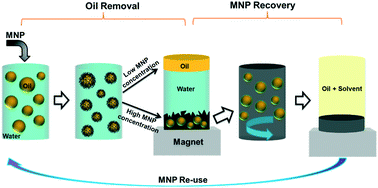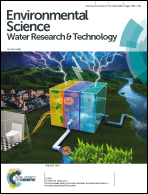Recyclable amine-functionalized magnetic nanoparticles for efficient demulsification of crude oil-in-water emulsions†
Abstract
Produced water from the oil and gas industry often contains stable crude oil-in-water emulsions that are typically difficult to treat with conventional separation methods. Amine-functionalized nanoparticles have demonstrated effective destabilization of crude oil-in-water emulsions by associating with natural surfactants present at the oil–water interface leading to separation of oil from water under an external magnetic field. Effects of magnetic demulsifier concentration, reaction time and initial oil content of emulsion on the demulsification efficiency were investigated. The demulsification efficiency of emulsions can reach as high as 99.7% by the magnetic demulsifier. Our findings characterize the demulsification process as a function of nanoparticle concentration and elucidate the governing interactions between NH2-MNPs and emulsion droplets. Another important feature of this magnetic demulsifier is its capability to be recovered by solvent-washing and reused for subsequent demulsification cycles. The recovered magnetic demulsifier was proven to be effective in demulsifying O/W emulsion for at least 6 cycles, revealing its recyclability. Demulsification of O/W emulsions with NH2-MNPs has great potential as an efficient strategy for oil removal from produced water.

- This article is part of the themed collection: Best Papers 2018 – Environmental Science: Water Research & Technology


 Please wait while we load your content...
Please wait while we load your content...